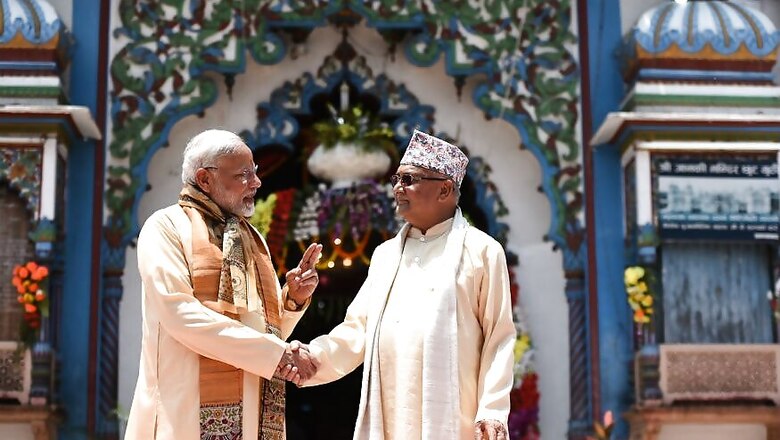
views
New Delhi: The year 2015 was a particularly bad one in India-Nepal relations. The almost five-month long Madhesi blockade and the ensuing allegations from the Nepalese side brought to the fore a bitterness that was never made so obvious by Kathmandu. This was followed by the ouster of KP Sharma Oli in 2016 and it was again blamed on India.
What Oli also did during this period was to pit China against India.
During the Madhesi blockade Kathmandu turned to China for alternative fuel supply. Nepal also hopped on to China’s Belt and Road Initiative last year, signing a framework agreement, just two days ahead of the BRI summit in Beijing. Nepal’s then foreign minister Prakash Sharan Mahat had said that Nepal’s development crucially needs investment for road and rail connectivity.
Despite the agreement, China itself was finding it hard to initiate any project in Nepal without India’s involvement.
A source in Beijing, working closely with the establishment, said “it is getting difficult to avoid India” if a viable project is to be launched in Nepal.
Nepal has, on its part too, been cautious. Former Nepalese Ambassador to India Deep Kumar Upadhyay had told News18 last year that Nepal was wary of getting caught in a debt trap. He said Nepal will certainly ensure that “cost meets benefit” before jumping into any project.
So with India and China’s cautious rapprochement in Wuhan, has the situation changed? Sources have told News18 that the China-Nepal-India economic corridor did not come up for discussion in Wuhan when Modi met Chinese President Xi Jinping. To News18’s specific query on Belt and Road initiative being referred to during the meeting of the two leaders, Foreign Secretary Vijay Gokhale said, “I think both sides spoke of their respective efforts to contribute to regional and global economic development.”
In Nepal’s context, this can be interpreted as India making it clear that it would be interested in working only bilaterally with Kathmandu on development projects related to infrastructure and connectivity. This message will be conveyed to KP Sharma Oli during the bilateral meeting this evening in Kathmandu as has been conveyed subtly to China already.
Important among these projects will be the proposed Raxaul-Kathmandu rail network. According to sources, the timeline depends on the technical survey which will begin very soon. Sources explained that railways is priority. Various links with the state of Uttarakhand and road network and river connectivity will be the next level. Meanwhile, to facilitate inland waterways transport, India is also readying a transshipment point in Kalughat, Bihar.
Also, the 900 MW Arun III hydroelectric project that will be jointly inaugurated by the Prime Ministers during this visit. This was awarded to India’s Satluj Jal Vidyut Nigam. Sources said this was an important project as KP Oli himself chaired the committee that cleared it.
India and Nepal have concluded an agreement on the 400KV Gorakhpur-Butwal cross border transmission line. This was finalised only last month in New Delhi.
Though India and Nepal share historic and cultural ties, the anti-India sentiment that surfaced over the last couple of years, needed to be deftly dealt with specifically in context of China’s growing ambitions in the region. That explains the slew of development projects related to connectivity and infrastructure development that India is concentrating on and is keen to push.
While Kathmandu may have gained temporarily pitting China against India, any real forward movement on the ground for the projects from either side needed a thaw in the India-China relations too. So, with the latest development in Wuhan, Nepal can breathe easy.
Wedged between the two Asian giants it will at least for now not have to be overly conscious of rubbing one the wrong way by engaging with the other. It seems to be slightly more comfortably placed in being able to lap up beneficial projects still, keeping in mind sensitivities on both sides.
















Comments
0 comment